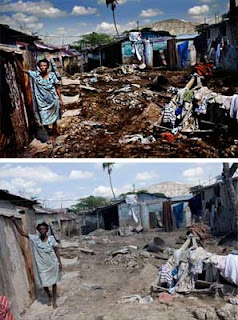Truth is a pillar upheld in all forms of journalism, as it is the critical factor that separates real journalism from hearsay. In the case of a journalist using imagery to tell their story, they must tell the truth and show the truth to their audience. However, photography requires a frame - i.e., a perspective - for a picture to be made in all its forms. The perspective (though it may not be obvious) subconsciously transfers into the message that the journalist is trying to evoke, whether they intend on that or not.
This idea is mentioned in an article on Aperture where author Chris Boot interviews Director of Documentary Arts Alan Govenar about truth in photojournalism and ethics in photography. In the article, Govenar states, "I think the awareness, the consciousness, of ethics in photography has become more apparent, more visible. Photographers have to discuss ethics, perhaps in a way that they have not before. But historically, for me, the ethics of photography are never neutral. Photographers and photography take a position, a point of view inherent to the framing in which the images are made. That has always been an issue. Issues of truth are time-honored and time-debated, maybe time-disregarded. But now, we face this floodgate of images daily. We have to try somehow to make sense of them" (Boot, 2021).
In my opinion, Govenar's point about perspective could not be more pertinent to the overarching subject of upholding truth in photojournalism. As viewers, citizens, and public members, it should be our obligation to try to recognize the differing perspectives within the context of an image.
 |
| from iMediaEthics |
Unfortunately, discerning what photographs are real and what are not can be a significant challenge, especially with the recent advancement of photo editing and digital post-production in the past few decades. A Times article by Santiago Lyon discusses the purpose of photography in a "post-truth era." Lyon describes the evolution of technology and how it has allowed people from legitimate and fake journalism organizations to spread a high volume of content. Content may be accurate reporting or a photoshopped screenshot taken from a trending tweet. Lyon states, "regardless of source, images are plucked out of the traditional and social media streams, quickly screen-grabbed, sometimes altered, posted and reposted extensively online, usually without payment or acknowledgment and often lacking the original contextual information that might help us identify the source, frame our interpretation and add to our understanding," (Lyon, 2017).
The last few words, "add to our understanding," is arguably the most important takeaway. As stated previously, the journalist is obliged to uphold the truth and never obstruct it. Further, journalists should be aware of images intended for publishing with the notion of adding to the general understanding of its audience.
No comments:
Post a Comment